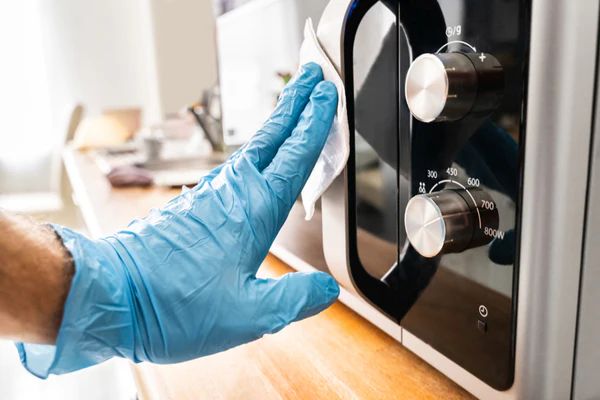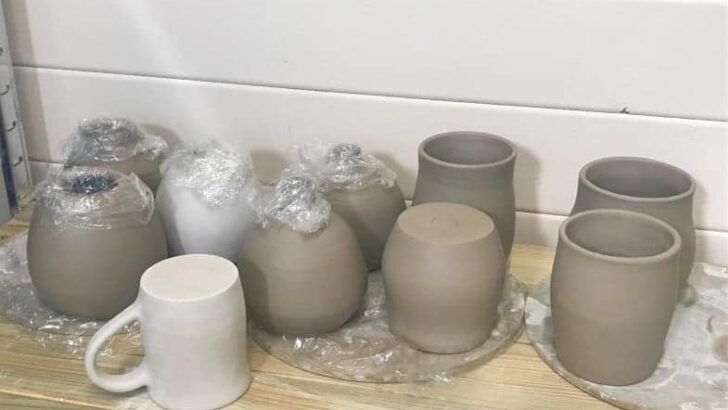How Do You Make Peach Skin Color With Clay?
Creating a realistic peach skin tone with polymer or air-dry clay allows artists to sculpt figures and models that accurately represent human skin. Whether creating a miniature doll, figurine, or jewelry piece, mixing just the right peach hue brings a sense of realism and life to the clay sculpture. The goal is to produce a soft, warm peach that resembles healthy natural skin, avoiding an artificial appearance. With care and practice, clay artists can develop a versatile peach skin recipe suitable for a wide range of projects and skin undertones.
Gather Materials
To make a realistic peach skin tone with clay, you’ll need the following materials:
White clay – This provides the base for the skin tone. A polymer clay like Sculpey or Fimo works well.
Cream clay – Adding a small amount of cream gives warmth to the white clay base. Sculpey and Fimo make cream polymer clays.
Brown clay – Use a dark brown clay to add undertones. Look for a reddish or yellowish brown.
Pink or red clay – A touch of pink or red gives blood undertones and vibrancy. Consider using translucent polymer clay in pink or red.
Paints or pastels – Flesh tones and blush colors, like burnt sienna or peach, add subtle accents.
Baby oil or mineral oil – Used to condition the clay and give it a realistic sheen.
Blending tools – Popsicle sticks, toothpicks, or specialty clay tools to mix and blend the clays.
Prepare the Clay
When working with clay, it’s important to properly prepare and condition it beforehand. This will make the clay soft and pliable, allowing you to easily sculpt, shape, and blend colors. Here are some techniques for conditioning polymer or oil-based clays:
– Knead the clay vigorously with your hands until it becomes soft and smooth. The warmth and pressure from kneading will bring the clay to an ideal texture.
– Use a clay roller or acrylic rod to roll out the clay into a slab. Then fold the slab over itself and pass the roller over it. Repeat several times. This stretches and aligns the clay particles.
– For very stiff clays, cut or break it into small chunks. Soak the chunks in baby oil or mineral oil for 10-30 minutes until pliable. Then knead thoroughly to fully incorporate the oil.
– To condition large volumes of clay, run it through a clay conditioning machine or pasta roller repeatedly until smooth and elastic.
– Avoid overconditioning the clay which can make it sticky. Judge readiness by if the clay easily bends without cracking. Erring on the side of slightly underconditioned is better.
Properly conditioned clay will lead to a stronger finished piece that’s easier to manipulate and blend colors into. Taking the time to prepare your clay is an essential first step before sculpting.
Understand Skin Undertones
When mixing peach skin tones with clay, it’s important to understand the different undertones that exist in human skin. The main undertones are warm, cool, and neutral.
Warm Undertones
People with warm undertones tend to have yellow, peach, or golden hues to their skin. Features like freckles, hazel or green eyes, and hair with red, blond, or chestnut tones can indicate warm undertones.
Cool Undertones
Those with cool undertones often have skin with blue, pink, or red undertones. They may have dark brown or black hair, blue or gray eyes, and rosy cheeks or lips. Their veins often appear blue or purple.
Neutral Undertones
Neutral skin undertones fall somewhere between warm and cool shades. They typically have a mix of both warm golden and cool pink or red tones. Neutral undertones are often described as “peaches and cream.”
Mixing Peach Skin Tone with Clay
When mixing a peach skin tone with clay, it’s important to understand skin undertones. Peach skin tends to have warm golden undertones. To achieve this, start with a warm base clay like terracotta or brown. Then add smaller amounts of lighter clays like white or yellow to lighten the skin tone. Here is a good starting ratio:
- 1 part terracotta or brown clay
- 1⁄4 part white clay
- 1⁄8 part yellow clay
Start by mixing together the brown and white clays thoroughly until well incorporated. Then add in the smaller amount of yellow clay. Knead together until you achieve an even peach tone. The more yellow clay you add, the more golden the undertones. The more white clay, the lighter and pinker the tone becomes.
Test the Color
Before applying your peach skin tone clay to the full sculpture, it’s important to test it first. Here are some tips for testing the color:
-
Take a small amount of the clay you’ve mixed and flatten it into a tile or thick pancake shape. Smooth the surface so you have a good testing ground.
-
You can also test on white paper or cardstock. The white background makes it easy to truly see the tone of the color.
-
Hold your test tile or paper next to your sculpture to compare the skin tone accuracy. Check it under different lighting as well to ensure the tone translates properly.
-
Make adjustments to your mixed clay color if needed. Adding a small amount of white, yellow, red, or brown clay can shift the tone. Test again until you achieve the right peach skin shade.
Testing thoroughly will ensure you end up with just the perfect subtle skin tone before sculpting the full figure.
Adjusting the Tone
Once you’ve mixed your initial peach skin tone color, you’ll want to test it out. Apply a small amount to a test piece and allow it to dry fully. Assess the color in both natural and artificial lighting once dry.
As you evaluate the tone, you may decide you want to adjust it. Here are some tips for altering the color if needed:
- If it’s too light, mix in a very small amount of red, yellow ocher or brown clay to darken and saturate it.
- If it’s too orange/yellow, add a tiny amount of blue and white clay to neutralize.
- If it’s too pink, mix in additional yellow clay.
- If it’s too gray, stir in more yellow and red clay.
Make adjustments in small increments, only adding a little bit of clay at a time. Re-test on another piece after each adjustment to ensure you achieve the right peach skin tone for your project before applying it to your final sculpture.
>
Highlighting
Highlights and shadows add dimension to clay sculptures. For peach skin tones, highlight areas that protrude, like cheeks, nose, chin, forehead and parts of the lips, with a lighter shade.
To make a highlighting color, take a small portion of the peach clay and mix in a touch of white and yellow. Knead it thoroughly until combined. The color should be noticeably lighter and have a slightly warmer undertone. Apply sparingly to raised areas with a brush, sponge or your fingertips. Build up layers gradually for a natural look. Avoid using too much highlight or making the transitions harsh.
Blend softly on the edges of highlights so they fade into the base color seamlessly. Let it dry completely before continuing to shade or seal the sculpture. Subtle, realistic highlights breathe life into clay art!
Shading
Shading is an important technique for adding dimension and realism to clay sculptures. When working with peach skin tones, consider adding subtle shadows in the following areas:
- Under the cheeks, chin, and jawline
- Around the sides of the nose and corner of the eyes
- Near hairlines and ears
Mix a small amount of raw umber, burnt umber, or raw sienna acrylic paint into a peach color similar to your base. Apply this mix gently with a soft brush, sponge, or cloth along the natural contours of the face. Slowly build up the shadows, blending well after each layer.
Continue adding depth until you achieve a natural shadow effect. Take care not to over-blend or apply too heavily near highlighted areas. Proper shading will enhance realism and bring life to the sculpture.
Sealing and Protecting the Clay
Once you have achieved the desired peach skin tone and finished sculpting your clay artwork, it is important to seal and protect the clay properly before use. This helps lock in the color and increases durability.
There are several sealant options to choose from:
- Acrylic spray sealer – Fast-drying and provides a protective coating while retaining texture. Apply 2-3 thin mist coats allowing to dry in between.
- Polyurethane – Provides a thick, durable glossy coat for clay. Apply 1-2 thin coats allowing several hours of drying time in between. Ensure proper ventilation.
- Matte varnish – Seals clay while providing a non-glossy, matte finish. Shake can well and apply light mist coats until fully covered.
Be sure to test sealants on a clay sample first and allow adequate drying time between coats. Once fully cured, the protective finish will help prevent color transfer and overall wear on clay skin tone over time.


